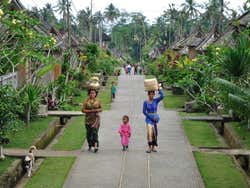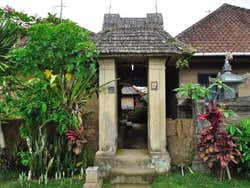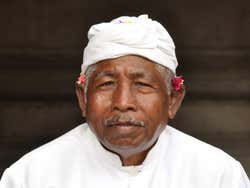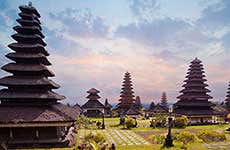
Traditional Villages
Read about the traditional structure of villages and family homes in Bali, and find out which ones are worth a visit.
Like the rice fields, visiting a traditional village in Bali can be another valuable insight into rural life and a refreshing escape from the commercial tourist areas. They're also a place where you'll get to see local crafts and art. For example, visit Tenganan Village to see gringsing woven fabrics, Batuan Village for exquisite paintings or Celuk Village for handmade jewellery. On the other hand, in Trunyan Village, you can see bodies left to decay naturally under a taru menyan tree!
Here are some of the main elements of a Balinese village:
- Pura: Although each family home has its own place of worship, the community's religious and social life revolves around the main temple, where they often go to present their offerings.
- Warung: A small family business, generally a wooden hut, that serves as a convenience store or café.
- Wantilan: A hall for community activities and public entertainment.
- Bale kulkul: A drum tower used for religious announcements.
Balinese families often live in house compounds made up of multiple pavilions, such as a family shrine, a pavilion where the head of the family lives, a kitchen, a barn, and a guest house. Many houses also have a plaque on the door indicating the number of people living there, as well as deceased family members.




